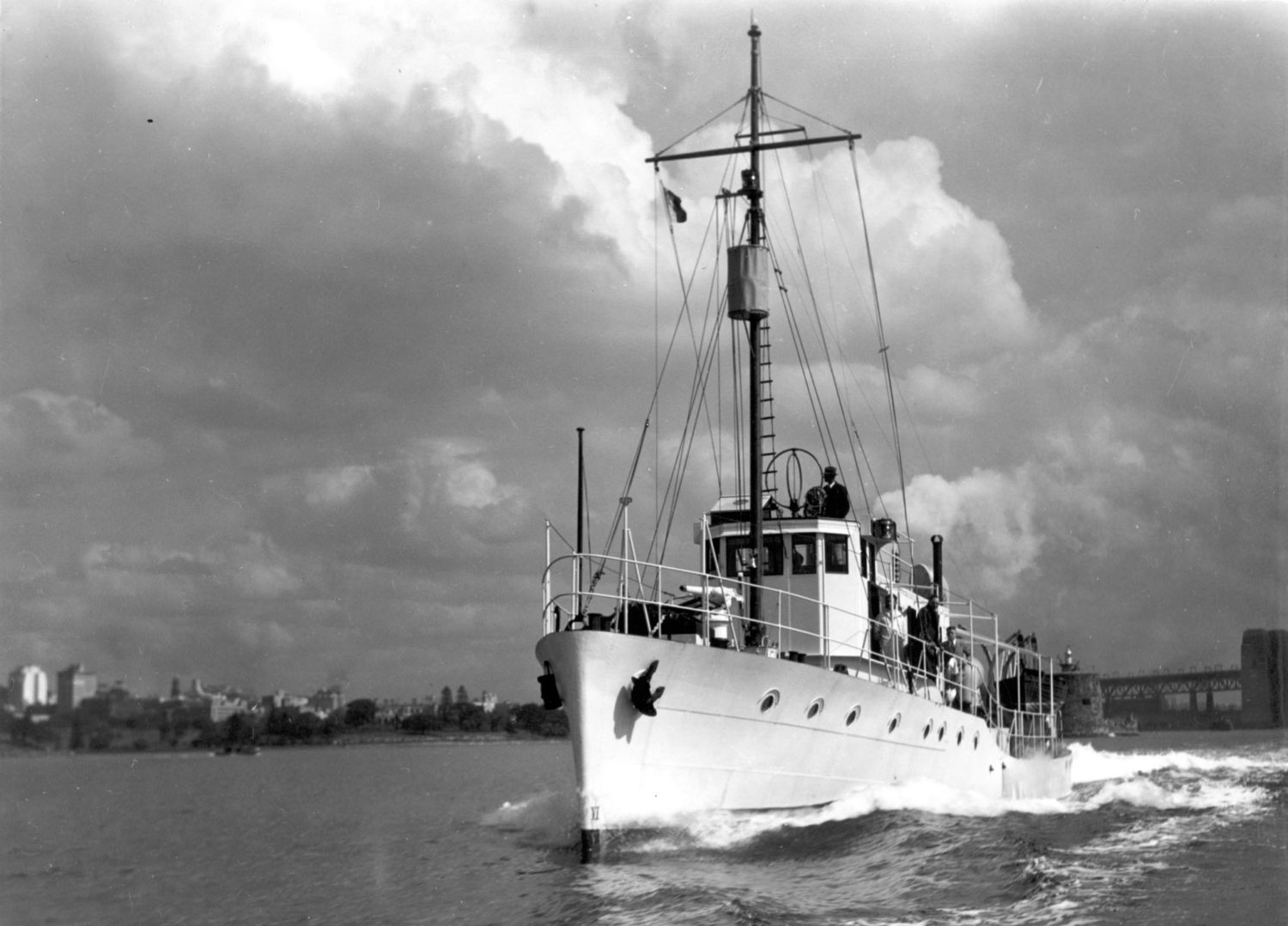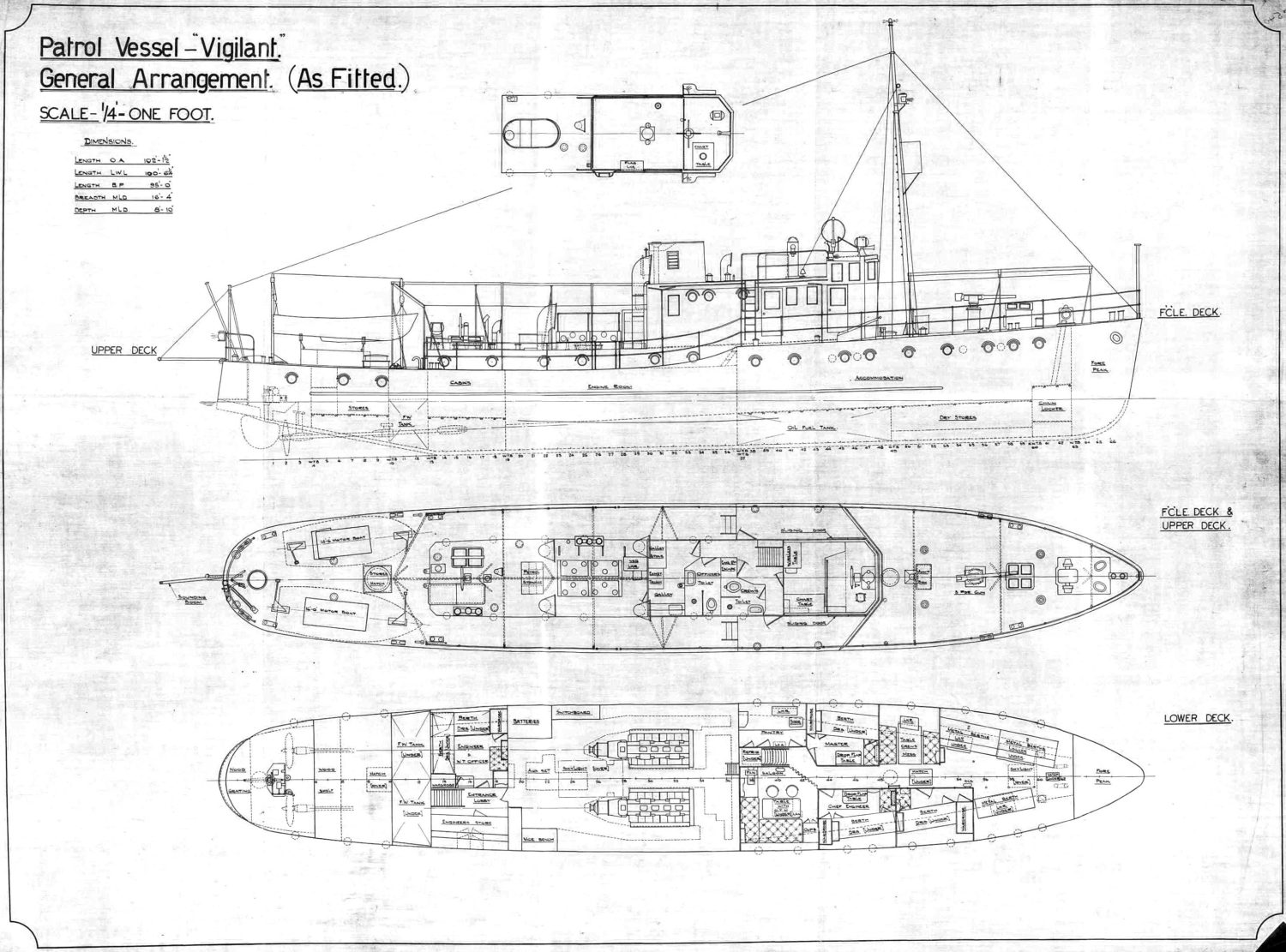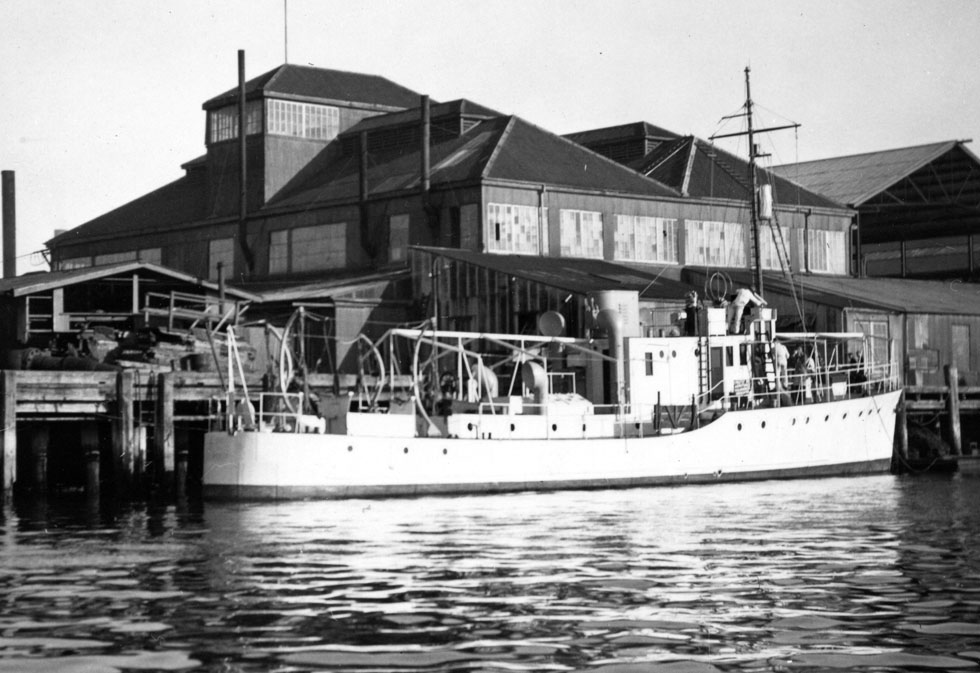By John Jeremy
The work of patrolling the seas to the north of Australia has become a major task for the RAN and the Australian Border Force. It is easy to think that the need is relatively new, but that is not so and in the 1930s efforts were made to improve our northern defences against smuggling and other illegal activities by the purchase of new patrol boats for that purpose. They were to be based in Darwin, taking up station shortly before World War II.
One of the new vessels was a 45 foot (13.6 m) fast patrol boat ordered from Scott-Paine and Company, Hythe, England to a design by The British Power Boat Company. Displacing 12 tons Larrakia was powered by three 75 kW Meadowes petrol engines for a top speed of 23 knots and an economical speed of 12 knots. Larrakia had a crew of ten and was armed with one .303 inch Vickers machine gun. [1]

The new patrol boat was delivered to Sydney eighty seven years ago and after final fitting out at Cockatoo Dockyard she was sent to her home port of Darwin. Shortly after arrival in July 1936 she nearly sank when an automatic bailing device flooded the boat at night, but was saved by her crew before serious damage was done. The press reported the Administrator of the Northern Territory (Lt. Colonel Weddell) as saying that her first trial patrol outside Darwin Harbour was ‘satisfactory in every way.’ The trial run was to Bathurst Island some 50 n miles away, and the boat made 17 knots in open calm sea. The press also noted that ‘wireless contact was made with Darwin and Qantas Empire Airways ‘planes flying to and from Darwin’ [2]
In the few years before the war Larrakia conducted fisheries and security patrols in northern waters and arrested a number of illegal pearling and fishing vessels. After September 1939 she was used by the RAN as an examination vessel in Darwin and she also helped with the preparation of defence facilities around the city. She was formally requisitioned and commissioned as HMAS Larrakia on 8 December 1941 and served as a patrol vessel and air-sea rescue launch.
HMAS Larrakia paid off on 16 February 1944 and was sold on 3 April 1946.
The second patrol boat was a more substantial vessel. Ordered from Cockatoo Dockyard by the Department of Trade and Customs on 12 March 1937, Vigilant was designed by the dockyard under the supervision of naval architect Cecil Boden. Built of steel, she was 100 feet (30.3 m) long on the waterline, 16 feet 4 inches (4.95 m) in beam and her depth to the upper deck was 8 feet 10 inches (2.68 m). Her full load displacement was 105 tons and she was powered by two 240 kW 16-cylinder Gleniffer diesels driving twin shafts through 2:1 reduction gearboxes. Her top speed was 14.75 knots.
Vigilant was particularly notable in that she was the first ship built in Australia in which aluminium was used as a structural material. Her deckhouse forward of the funnel was made of riveted aluminium alloy grade 57S supplied by Aluminium Union Limited.

(Photo John Jeremy Collection)
Vigilant was launched on 12 February 1938 and completed on 25 July. She was armed with a 3-pounder gun and was soon at her home port of Darwin.
This little ship is familiar to many older naval architects who may have used her as a study project [3]. Amongst the tasks given to students was working out how her cross curves of stability had been prepared, for they showed that her righting lever reached a maximum at 90 degrees of heel, a rather unlikely condition. It was useful training in the use of the integrator to try to duplicate that interesting result.
This useful ship was requisitioned by the RAN in October 1940 and commissioned as HMAS Vigilant. In January 1942 she helped HMAS Deloraine sink the Japanese submarine I 124 by keeping her supplied with depth charges and throughout that year was busy supplying guerrilla troops in Timor and later took Z-force special personnel there. Later in the war she became a survey vessel. She was renamed Sleuth in April 1944 and Hawk in March 1945. She paid off on 13 September 1945 and was returned to the Department of Trade and Customs.
No longer required for her original duties, Vigilant was sold in October 1946 to the Nor’–West Whaling Company Limited of Perth. During her conversion to a whale catcher her original engines were replaced with 12-cylinder Paxman diesels to increase her speed. She chased whales off the coast from July to September spending the rest of each year at anchor in the Canning River. In 1962 she had a particularly good year, catching 57 whales.
Vigilant was sold in April 1966 and returned to Sydney. She was sunk by her disgruntled crew in protest at a lack of pay but was raised and stripped for conversion to a luxury motor yacht. The conversion was never completed and she was finally broken up in Sydney in the late 1960s after a surprisingly long and eventful life for such a lightly built ship, although it was suggested that her hull had progressively been replated several times during her life [4].
References
- HMA Ship Histories (Sea Power Centre – Australia)
- ‘Trial is Successful’, The Sun, 20 July 1936
- The Australian Naval Architect, July 1998, p.14
- Jeremy, John C., The Island Shipyard: Shipbuilding at Cockatoo Island 1870 to 1987, Sydney Harbour Federation Trust, Sydney, 2013, pp 126-127
First published in The Australian Naval Architect August 2006











